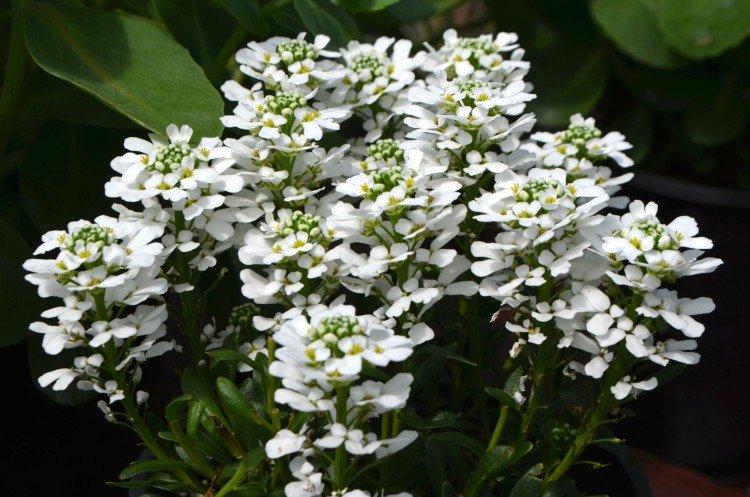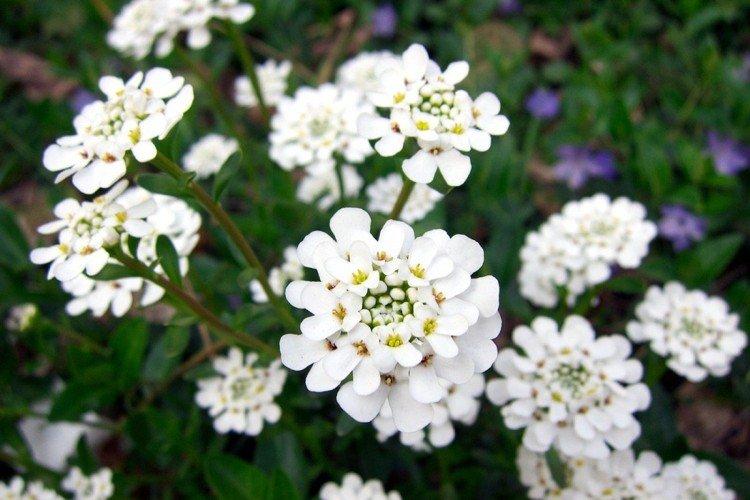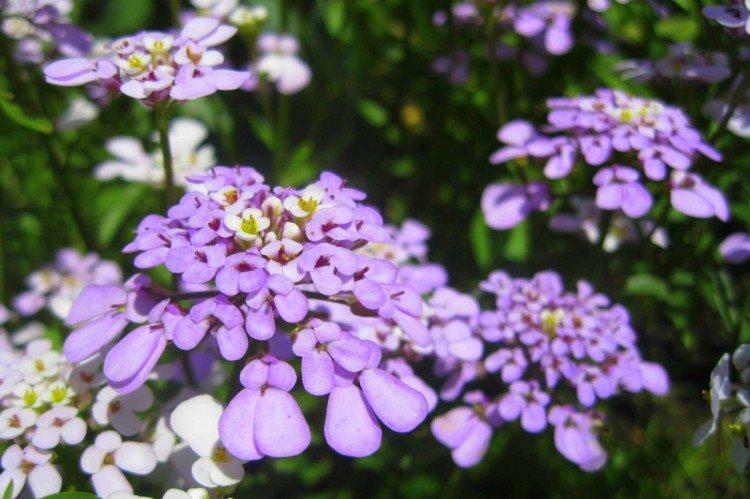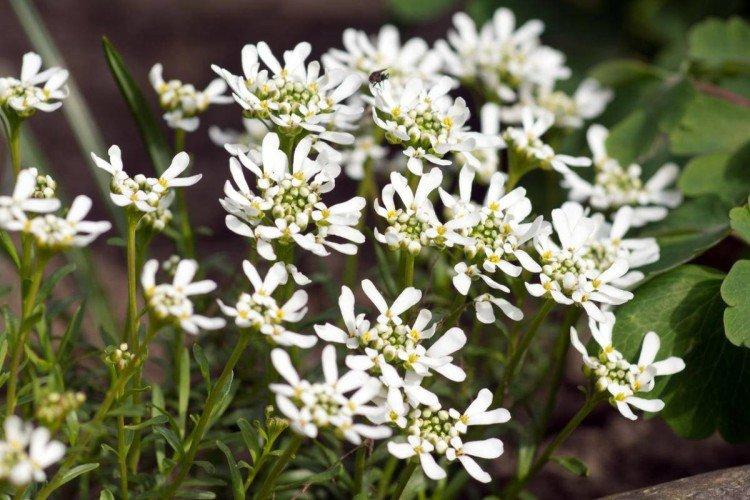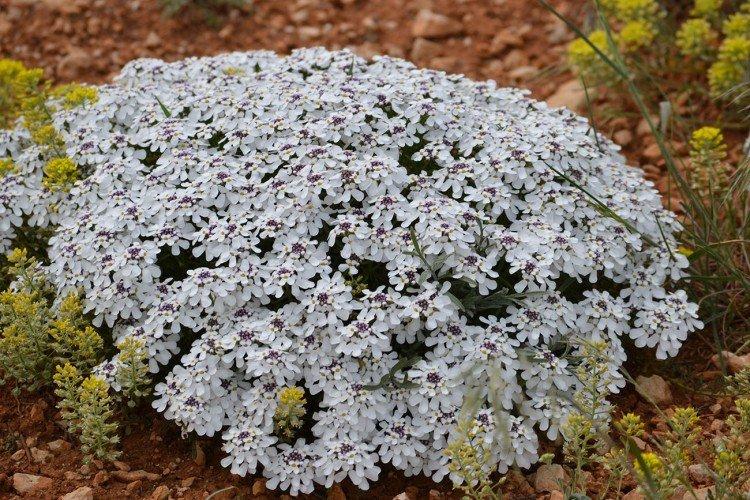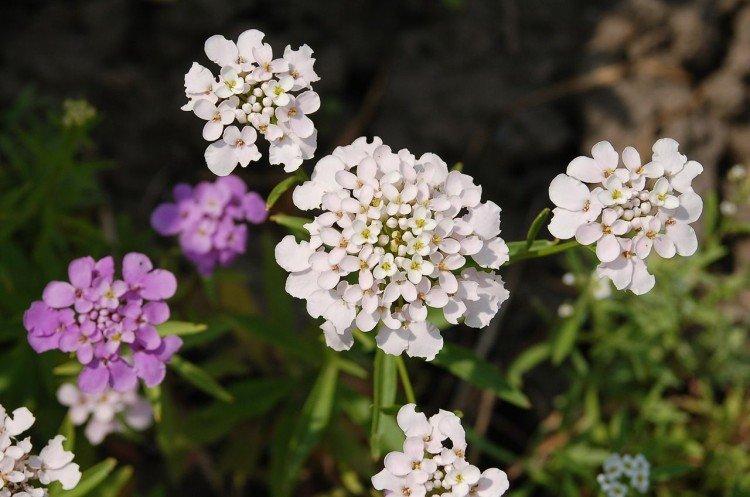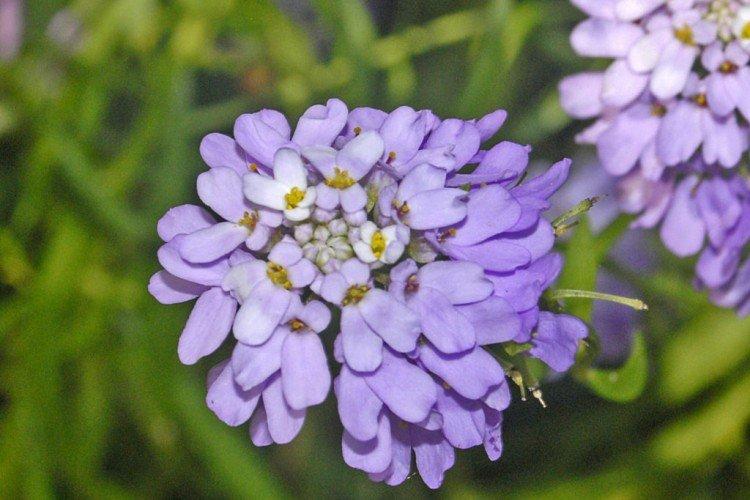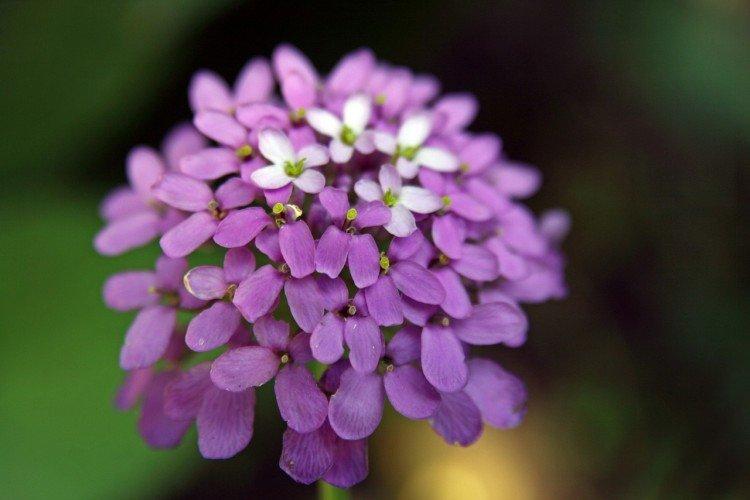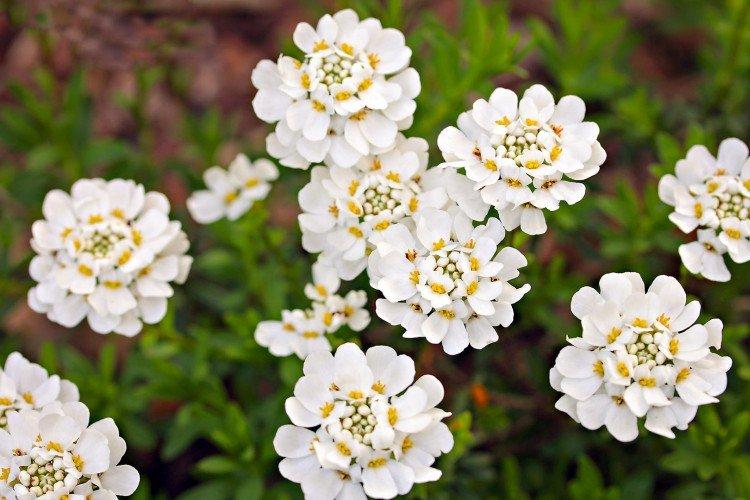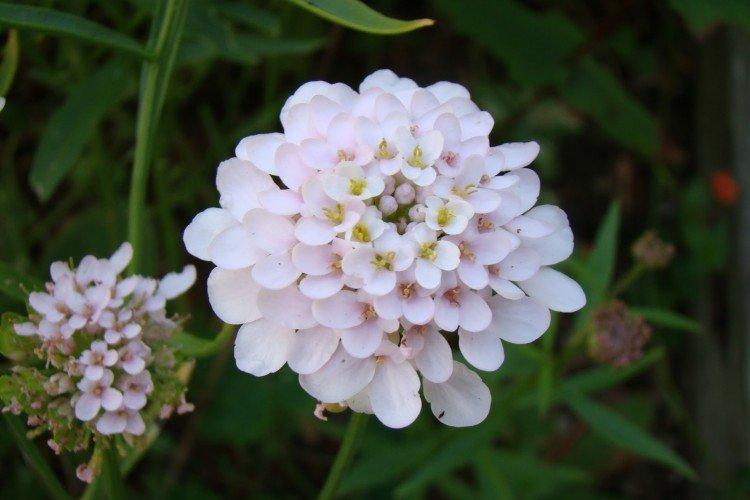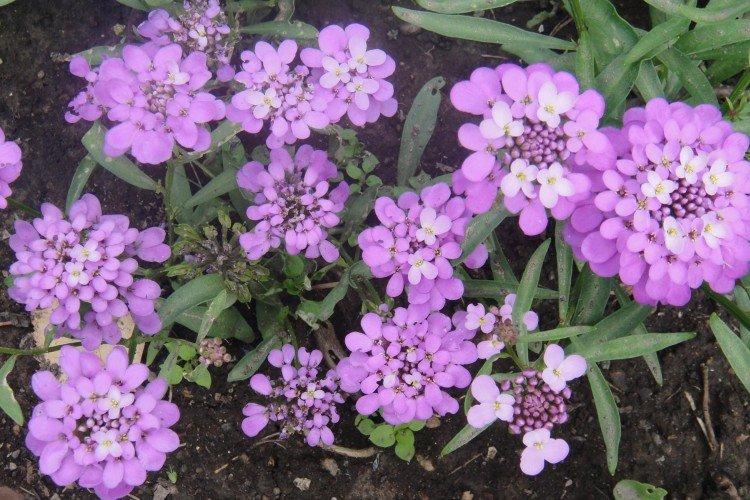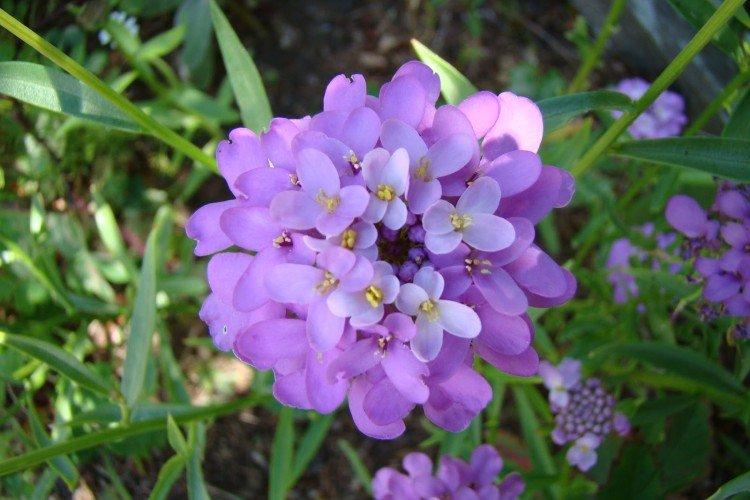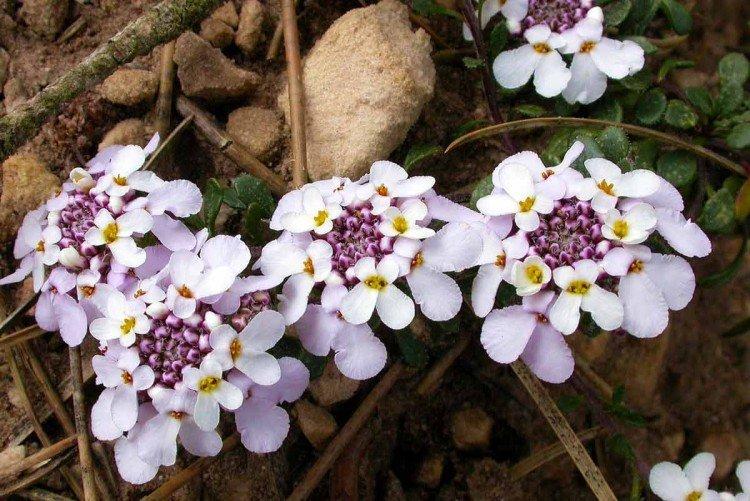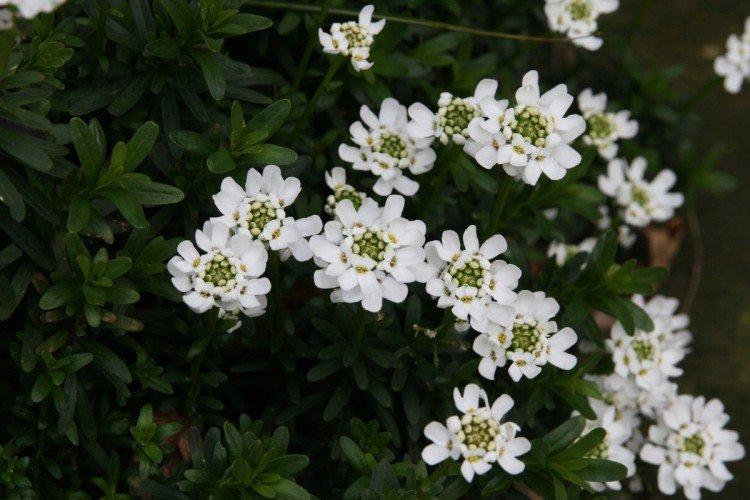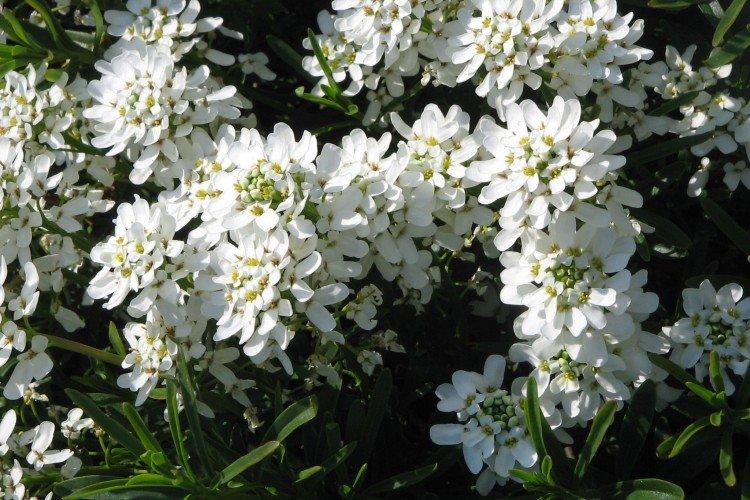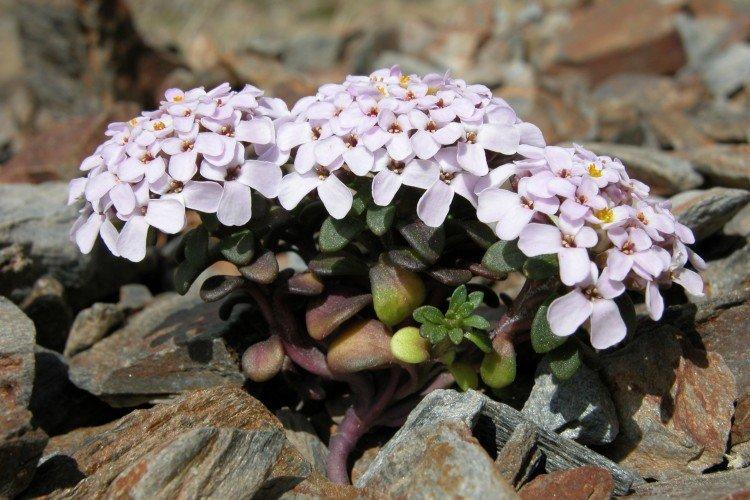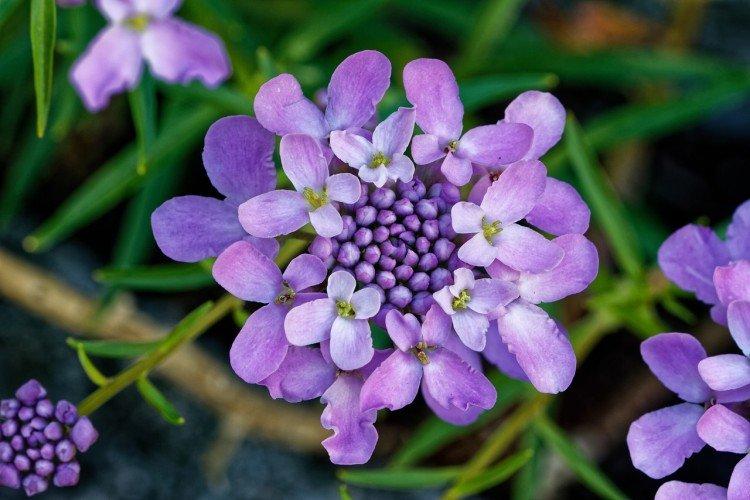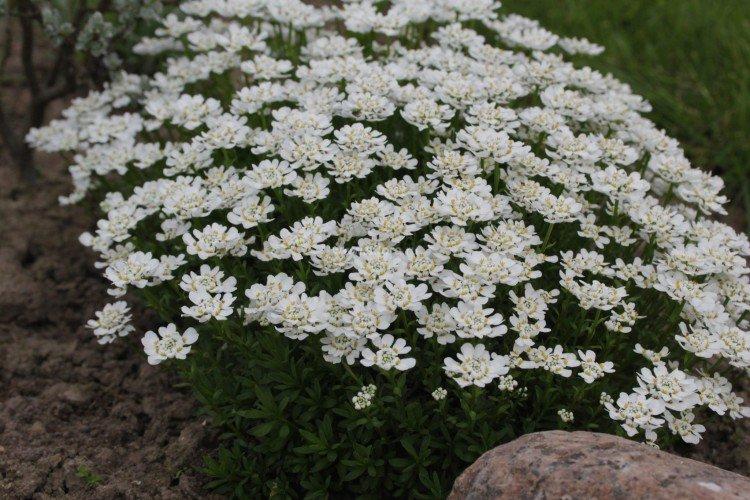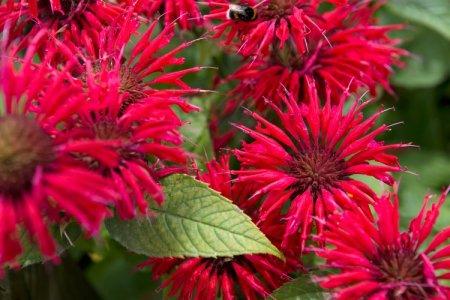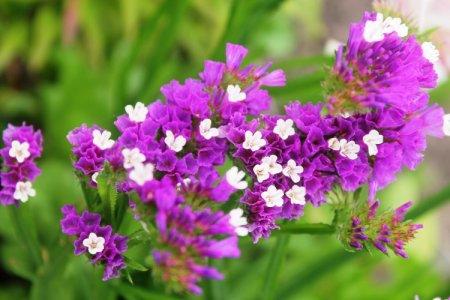
Unusual Iberis inflorescences resemble fluffy pillows of small flowers. Having seen them once, it is already difficult to confuse them with any other garden flowers. Iberis is a southern plant, and all the features of caring for it in our latitudes are connected with this!
general information
Iberis is a herbaceous annual, but some species grow as a dwarf shrub. He has white, pink or purple flowers of complex shape, collected in racemose umbrellas. There are varieties with whole or feathery leaves.
Iberis belongs to the cruciferous, and in some regions it is also called the peppercorn or variegated. It has a well-developed taproot, small leaves and straight or creeping shoots. This is a very small flower, only rare species of which grow at least up to 30-40 cm.The diameter of the flowers on average does not exceed 1.5-2 cm.
The name of the Iberis is directly related to the region where the flower grows. Most often in nature, it is found in Spain, and earlier it was called Iberia. The most common shades are white, pink, lilac, and less often purple and red.

Iberis species
Consider several types of Iberis that are most common. Among them there are also perennial varieties, but they are less often grown in our latitudes.
Evergreen Iberis
A compact shrub up to 40 cm in height with long shiny leaves and white flowers about 1.5 cm in diameter. Evergreen Iberis grows most actively in summer, but in general remains decorative throughout the season.
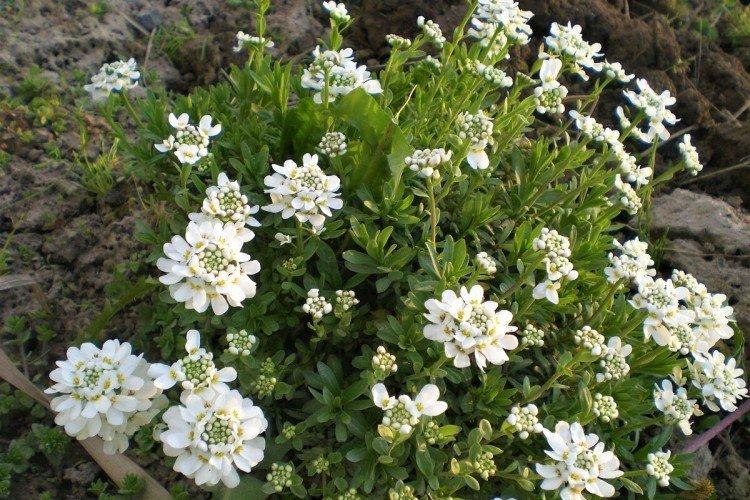
Rocky Iberis
Compact evergreen species, the inflorescences of which are so dense that they resemble a voluminous pillow. The flowers of the rocky Iberis are snow-white and very unusual.

Gibraltar Iberis
A low-growing shrub with pink inflorescences grows in breadth rather than in height. He needs as much sun as possible and moist but well-drained soil. There are very spectacular lilac varieties that change color right during flowering.

Bitter Iberis
An annual and one of the most unpretentious species in its family. It can be recognized by its pubescent stems, serrated leaves and fragrant flowers up to 2 cm in diameter.
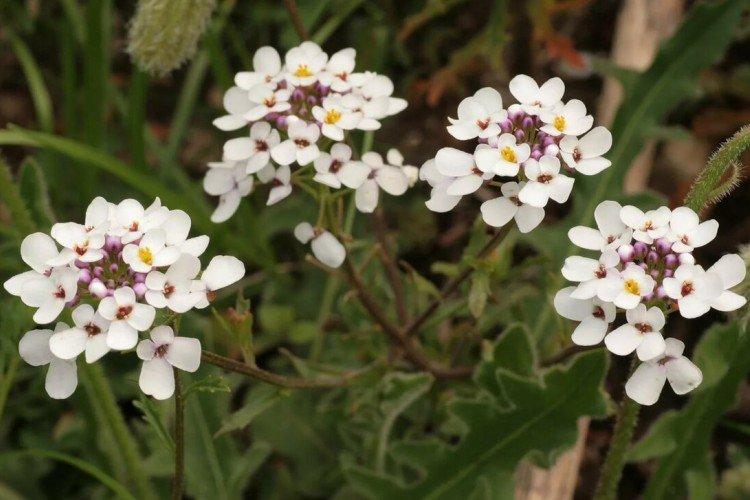
Crimean Iberis
An excellent option for the southern regions of our country. The height of the bush rarely exceeds 10 cm, but it perfectly decorates lawns in spring. Lilac buds gradually brighten and bloom with white flowers.
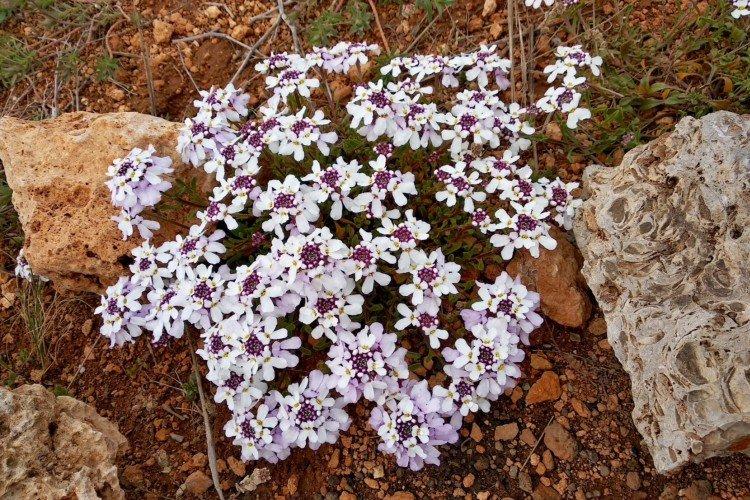
Umbrella Iberis
Relatively tall as for Iberis, an annual grows up to 40 cm. It blooms in June and continues to bloom for about two months, after which the buds are replaced by pods.

Iberis care
The hardest part of caring for an Iberis is planting it. The core rhizome responds very poorly to anxiety, so it is important to keep the required procedures to a minimum. The rest of the plant is not a hassle.
Temperature and lighting
Given the origin of Iberis, it's easy to guess that it prefers warmth and sun. Feel free to choose an open area, because the plant is not afraid even of direct sunlight.
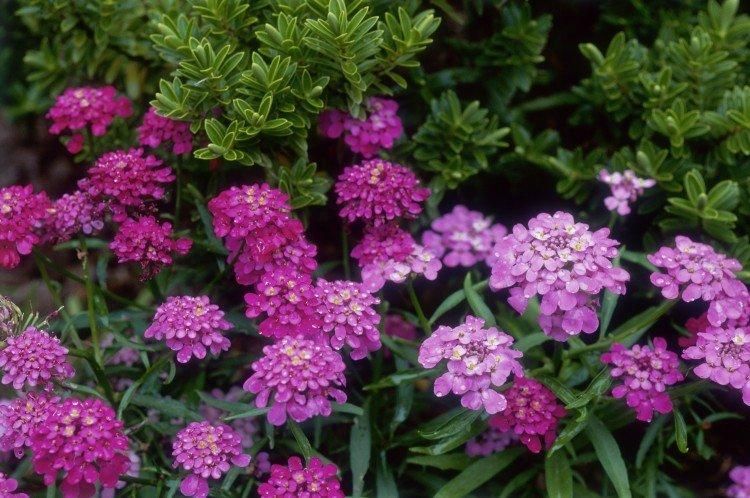
Watering
Iberis practically does not need additional moisture. Moderate watering is sufficient during prolonged drought periods. And so he is quite enough periodic natural precipitation.
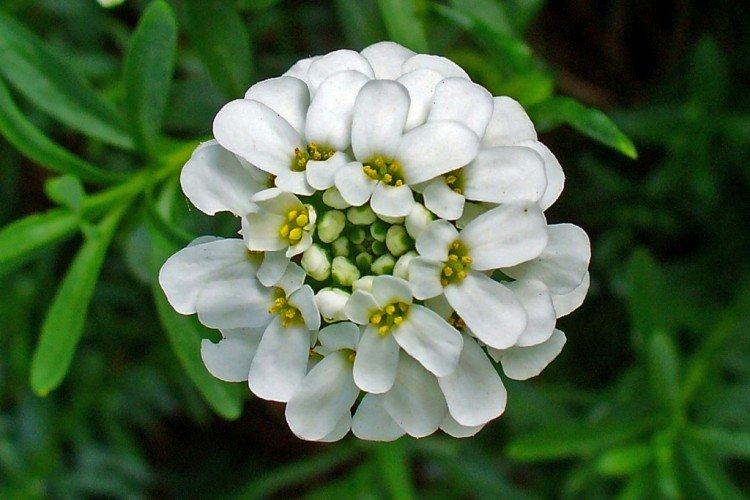
The soil
Iberis prefers sandy or rocky soils. Loams are good, but the main thing is that there is no stagnation of water at the roots, because this is guaranteed to destroy the plant.
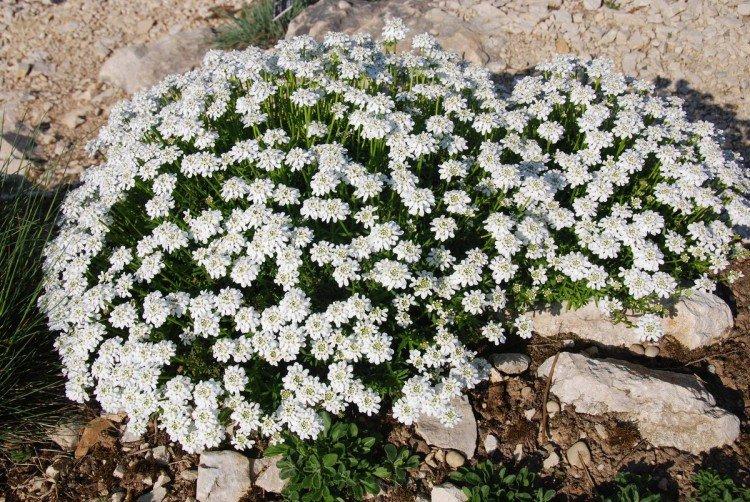
Fertilizers and feeding
Iberis grows well even in rocky areas without feeding. But if you want to achieve even more lush flowering, apply complex fertilizers, but not more than 2 times a season.
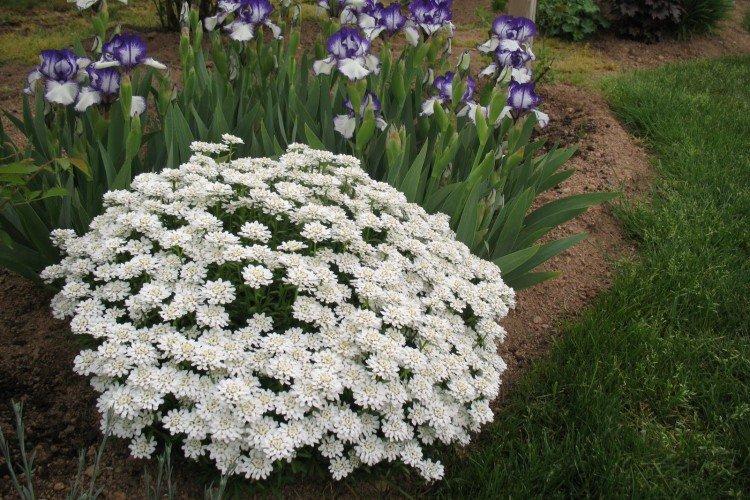
Pruning
In order for the Iberis to retain its decorative effect throughout the season, be sure to remove fading buds in time.After flowering, shorten the shoots by a third, and the green bushes will look much prettier.
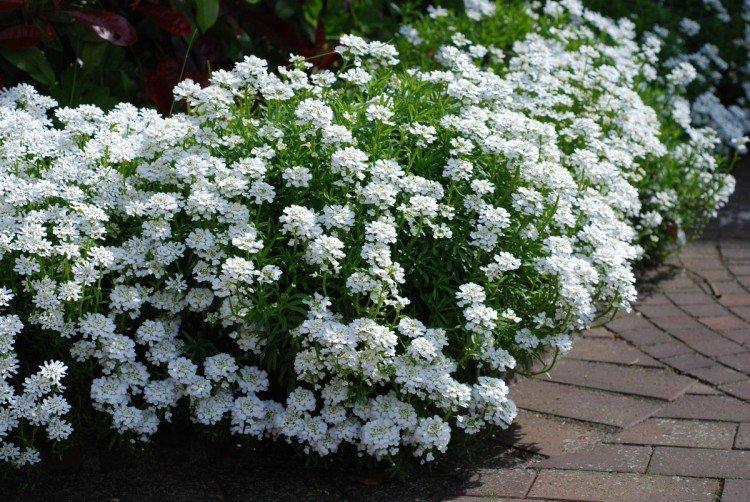
Wintering
If you still grow perennial Iberis in the middle lane, we advise you to take care of shelter for the winter. With the approach of cold weather, completely cut off the entire ground part of the plant and cover it with a thick layer of spruce branches.

Planting and breeding
Iberis is very convenient to propagate by seed directly into open ground in April. We advise you to plant them in two passes with an interval of 2-3 weeks. Thin the seedlings as they germinate so that 10-15 cm remain between the bushes.
In early spring, you can plant seedlings at home. You do not need to deeply bury the seeds in the soil - just sprinkle it lightly and cover with a film. Leave the container warm in the sun and spray occasionally. Plant the seeds right away so that the seedlings do not have to dive.
When the frosts finally pass, transplant the Iberis into the garden. Transplant the seedlings very carefully together with an earthen clod so as not to disturb the root system. If you are planting different species, do not plant them in the same place, because they will become highly pollinated.
Old tall perennials can be divided into several parts in early spring and immediately planted back into the soil. In summer, apical cuttings about 9 cm long are rooted. Plant them in moist soil and cover them with a greenhouse cover until new shoots appear.
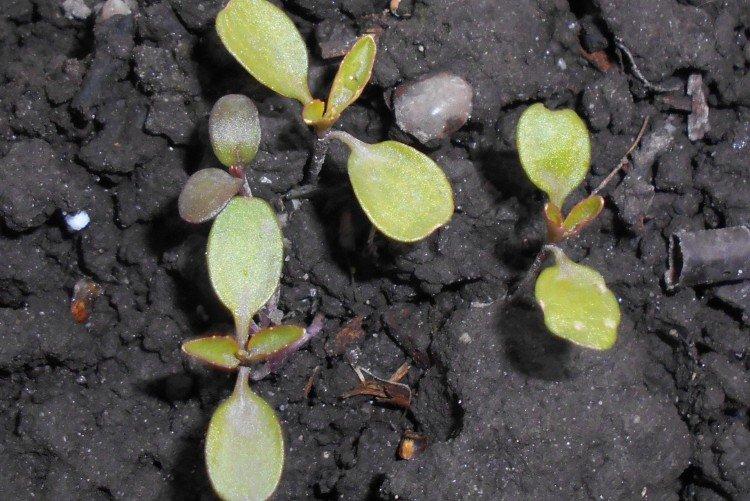
Diseases and pests of Iberis
Too heavy or damp soil is a common cause of fungus. Also, fungal diseases arise from an excess of moisture or with excessive thickening of the planting. Choose the right site, keep distance between bushes and use fungicides.
Iberis should not be planted in a place where any other cruciferous plants grew before. This is fraught with the spread of cabbage keel - an infection that persists in the soil for several years and destroys the root. We advise you to disinfect the soil before planting.
The most common pests of Iberis are aphids, worms and earthen fleas. Fortunately, there are no additional complications here. Just use complex insecticides according to the instructions. Washing with soapy water and dusting with bone meal helps with aphids in small quantities.
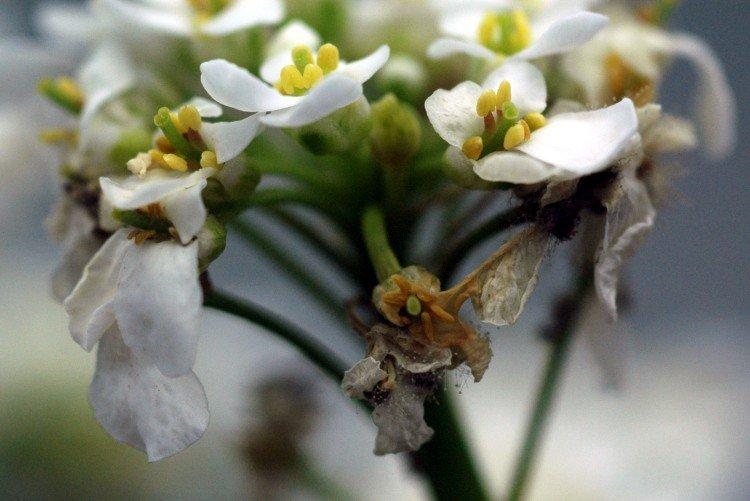
Iberis - photo
Iberis looks great in flower gardens, on alpine slides and almost everywhere. They can even decorate masonry. Watch and be inspired!

